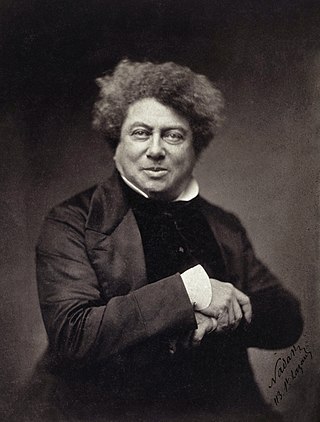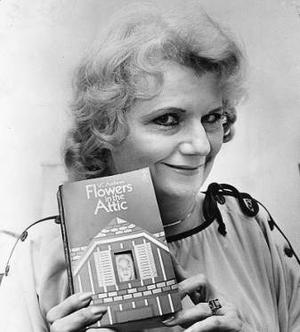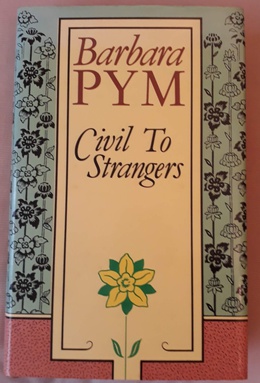Related Research Articles

Marie-Henri Beyle, better known by his pen name Stendhal, was a French writer. Best known for the novels Le Rouge et le Noir and La Chartreuse de Parme, he is highly regarded for the acute analysis of his characters' psychology and considered one of the early and foremost practitioners of realism. A self-proclaimed egotist, he coined the same characteristic in his characters' "Beylism".

The Count of Monte Cristo is an adventure novel written by French author Alexandre Dumas (père) completed in 1844. It is one of the author's most popular works, along with The Three Musketeers. Like many of his novels, it was expanded from plot outlines suggested by his collaborating ghostwriter Auguste Maquet.

Alexandre Dumas, also known as Alexandre Dumas père, was a French novelist and playwright.

Prosper Mérimée was a French writer in the movement of Romanticism, one of the pioneers of the novella, a short novel or long short story. He was also a noted archaeologist and historian, an important figure in the history of architectural preservation. He is best known for his novella Carmen, which became the basis of Bizet's opera Carmen. He learned Russian, a language for which he had great affection, before translating the work of several notable Russian writers, including Pushkin and Gogol, into French. From 1830 until 1860 he was the inspector of French historical monuments, responsible for the protection of many historic sites, including the medieval citadel of Carcassonne and the restoration of the façade of the cathedral of Notre-Dame de Paris. Along with the writer George Sand, he discovered the series of tapestries called The Lady and the Unicorn, arranging for their preservation. He was instrumental in the creation of Musée national du Moyen Âge in Paris, where the tapestries now are displayed. The official database of French monuments, the Base Mérimée, bears his name.

Dame Mary Barbara Hamilton Cartland,, known as the Queen of Romance, was an English writer who published both contemporary and historical romance novels, the latter set primarily during the Victorian or Edwardian period. Cartland is one of the best-selling authors worldwide of the 20th century.

Giuseppe Tomasi, 11th Prince of Lampedusa, 12th Duke of Palma, GE, known as Giuseppe Tomasi di Lampedusa, was a Sicilian writer, nobleman, and Prince of Lampedusa. He is most famous for his only novel, Il Gattopardo, which is set in his native Sicily during the Risorgimento. A taciturn, solitary, shy, and somewhat misanthropic aristocrat, he opened up only with a few close friends, and spent a great deal of his time reading and meditating. He said of himself as a child, "I was a boy who liked solitude, who preferred the company of things to that of people", and in 1954 wrote, "Of my sixteen hours of daily wakefulness, at least ten are spent in solitude."

Amerika, (German working title Der Verschollene, "The Missing") also known as The Man Who Disappeared (Amerika), Amerika: The Missing Person and Lost in America, is the incomplete first novel by author Franz Kafka (1883–1924), written between 1911 and 1914 and published posthumously in 1927. The novel originally began as a short story titled "The Stoker". The novel incorporates many details of the experiences of his relatives who had emigrated to the United States. The commonly used title Amerika is from the edition of the text put together by Kafka's close friend, Max Brod, after Kafka's death in 1924. It has been published in several English-language versions, including as Amerika, translated by Edwin and Willa Muir (1938); as The Man Who Disappeared (Amerika), translated by Michael Hofmann (1996); as Amerika: The Missing Person, translated by Mark Harman (2008), as Lost in America, translated by Anthony Northey (2010), and as The Man Who Disappeared (America), translated by Ritchie Robertson (2012).

Le Rouge et le Noir is a historical psychological novel in two volumes by Stendhal, published in 1830. It chronicles the attempts of a provincial young man to rise socially beyond his modest upbringing through a combination of talent, hard work, deception, and hypocrisy. He ultimately allows his passions to betray him.

Peter Malcolm de Brissac Dickinson OBE FRSL was an English author and poet, best known for children's books and detective stories.
Mack Bolan, alias The Executioner, is a fictional character who has been serialized in 631 novels with sales of more than 200 million books. Created by Don Pendleton, Bolan made his first appearance on the printed page in The Executioner #1: War Against the Mafia (1969). Pendleton wrote 37 other novels featuring Bolan, often referred to as the "Mafia Wars". In 1980, Pendleton sold his rights to the character to Gold Eagle, which hired a number of ghostwriters to continue publishing Bolan monthly, to satisfy reader demand worldwide. Pendleton remained credited as the sole author and supervised these new adventures, which took the Bolan character all over the world fighting terrorism. This new series of books featured Bolan as a principled warrior fighting larger-than-life adversaries in the spirit of a tougher, American version of James Bond. The demand for the books continued, and Gold Eagle began releasing as many as 15 titles annually. In 2014, more than a dozen Mack Bolan novels were being published every year worldwide by Gold Eagle Books, a division of Harlequin Books. Additionally, Bolan was "spun off" into several new adventure book series which also carried the Mack Bolan/Don Pendleton names.

Cleo Virginia Andrews, better known as V. C. Andrews or Virginia C. Andrews, was an American novelist. She was best known for her 1979 novel Flowers in the Attic, which inspired two movie adaptations and four sequels. While her novels are not classified by her publisher as Young Adult, their young protagonists have made them popular among teenagers for decades. After her death in 1986, a ghostwriter who was initially hired to complete two unfinished works has continued to publish books under her name.
Marion Kirk Buthlay CVO was a Scottish educator and governess to Princess Margaret and Princess Elizabeth. Known then by her maiden name, Elizabeth and Margaret affectionately called her Crawfie. Crawford worked for the Royal Family from 1933 to 1949. Upon her departure, she agreed to author The Little Princesses, a book which told the story of her time with the family. Though given tentative approval by the royal family to publish anonymously, Crawford was completely ostracised by them after her writing appeared under her name; she left Nottingham Cottage, her grace and favour house, and no member of the family ever spoke to her again.

The Buccaneers is the last novel written by Edith Wharton. The story is set in the 1870s, around the time Wharton was a young girl. It was unfinished at the time of her death in 1937 and published in that form in 1938. Wharton's manuscript ends with Lizzy inviting Nan to a house party, to which Guy Thwaite has also been invited. The book was published in 1938 by Penguin Books in New York. After some time, Marion Mainwaring finished the novel, following Wharton's detailed outline, in 1993.

Jude Deveraux is an American author of historical romances. Deveraux has written over 40 novels, many of which have been on The New York Times Best Seller list, including such titles as A Knight in Shining Armor and Remembrance; she has sold over 50 million copies as of 2016. Deveraux appeared as herself in the 1987 romance novelist documentary Where the Heart Roams.

“Lucien Leuwen” is the second major novel written by French author Stendhal in 1834, following “The Red and the Black” (1830). It remained unfinished due to the political culture of the July Monarchy in the 1830s and Stendhal's fears of losing his government position by offending the administration. It was published posthumously in 1894.
According to books by Tyson Blue, Stephen J. Spignesi, and Rocky Wood et al., there are numerous unpublished works by Stephen King that have come to light throughout King's career. These allegedly include novels and short stories, most of which remain unfinished. Most are stored among Stephen King's papers in the special collections of the Raymond H. Fogler Library at the University of Maine, some of which are freely accessible to the library's visitors. However, others require King's permission to read. Additionally, there are a number of uncollected short stories, published throughout King's long career in various anthologies and periodicals, that have never been published in a King collection.

Souvenirs d’égotisme is an autobiographical work by Stendhal. It was written in 13 days in June and July 1832 while the author was staying in Civitavecchia. Stendhal recounts his life in Paris and London from 1821 to 1830. It includes candid and spirited descriptions of contemporaries such as Lafayette, Madame Pasta, Destutt de Tracy, Mérimée, and Charles de Rémusat. The story remained unfinished and was not published until 1892 by Casimir Stryienski.

The Life of Henry Brulard is an unfinished autobiography by Stendhal. It was begun on November 23, 1835, and abandoned March 26, 1836, while the author was serving as the French Consul in Civitavecchia. Stendhal had severe doubts about contemporary interest in his autobiography, so he bequeathed it to the reader of 1880, or of 1935, or 2000. The manuscript, including Stendhal's numerous diagrams and illustrations, was published in 1890. Stendhal primarily discusses his unhappy and dull childhood, touching briefly on his time as a soldier. The Life of Henry Brulard is considered a masterpiece of autobiographical writing and ironic self-reflection.

Breaking News in Yuba County is a 2021 American black comedy film directed and co-produced by Tate Taylor, from a screenplay written by Amanda Idoko. The film stars an ensemble cast that includes Allison Janney, Mila Kunis, Awkwafina, Regina Hall, Wanda Sykes, Juliette Lewis, Samira Wiley, Jimmi Simpson, Clifton Collins Jr., Bridget Everett, Dominic Burgess, Keong Sim, Chris Lowell, Matthew Modine and Ellen Barkin.

Civil to Strangers and Other Writings is a collection of novels and short stories by Barbara Pym, published posthumously.
References
- ↑ Wood, Michael (1971). Stendhal . Ithaca, NY: Cornell University Press. p. 160. ISBN 978-0801491245.
- ↑ "Books of The Times; Unfinished Stendhal Novel, First Time in English". The New York Times . July 22, 1988. Retrieved July 20, 2015.
- ↑ Wood, Michael (December 8, 1988). "The Horror of Money". The London Review of Books. 10 (22): 13–14. Retrieved July 20, 2015.